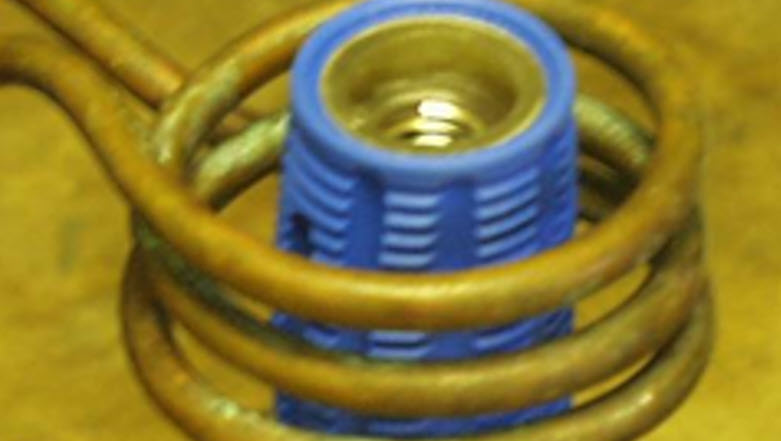9 Reasons to Consider Induction Heating for Manufacturing
In today’s manufacturing landscape, efficiency, precision, and sustainability are critical. Induction heating—a process that uses electromagnetic...
Processes
Processes: More
Processes: More

Industries:
Industries: More
Industries: More
Industries: More

Products:
Products: More
Services:
Services: More

Learn:
Learn: More
About:


A client in the food industry needed to heat the end of a stainless-steel handle with a plastic sleeve coated with heat adhesive for a bonding application. They had to heat the end of the handle to 250 ºF (121 ºC) in under 15 seconds.
More induction bonding application notes
THE LAB at Ambrell determined that an EASYHEATTM 1.2 kW, 150-400 kHz induction heating system with a three-turn helical coil would meet their requirements.
Initial tests were conducted to optimize the power delivered to the part. The assembly was then placed in the coil and heat was applied for 10 seconds at the end of the handle to reach the target temperature of 250 ºF (121 ºC). This successfully adhered the plastic sleeve to the handle.
Induction heating offers several benefits when compared to other heating options for bonding applications. Induction heating is precise and consistent. It also tends to be more energy efficient since it only heats the portion of the part that requires heating. It's fast, so it can lead to a reduction in process time, as was the case here. Finally, induction requires a modest footprint, especially when you consider that you can place the workhead away from the power supply, meaning it can be easily integrated into assembly lines.
If you'd like your application tested, contact THE LAB to take advantage of complimentary induction heating application testing from our expert applications team. Be sure to ask about our new Virtual Lab Service, where you can observe testing live from the comfort of your home or office.

In today’s manufacturing landscape, efficiency, precision, and sustainability are critical. Induction heating—a process that uses electromagnetic...

When it comes to many manufacturing processes, including this forging application, precision and efficiency are critical. Traditional heating methods...

The busy fall tradeshow schedule continues, with Ambrell set to exhibit at two more events next week: WESTEC 2025 in Anaheim, CA and The Battery Show...